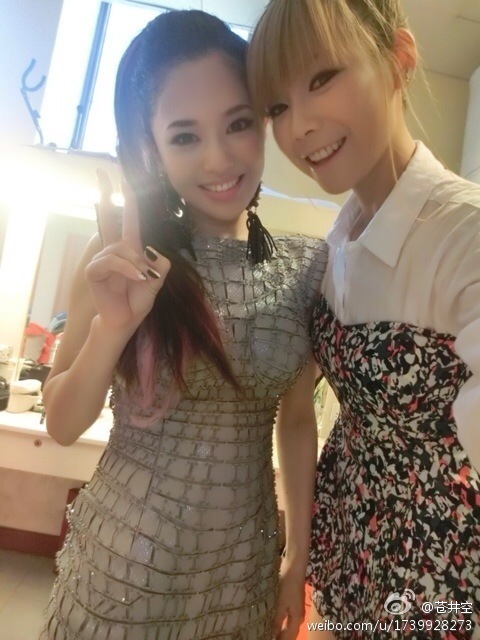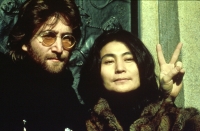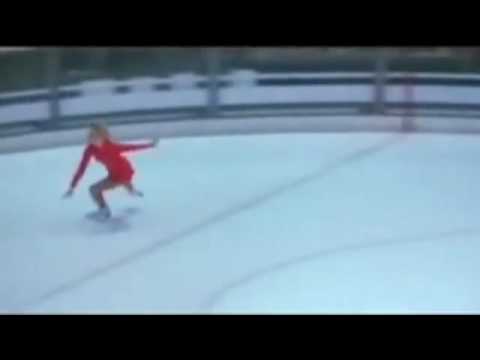Sola Aoi 蒼井空, and Origin of the Scissor-Hand in Asian Photos
Asian girls have this scissor-hand syndrome in photographs.


she's the famous Japanese porn star Sola Aoi (born 1983) (蒼井空; 蒼井 そら) And now she's also a media personality, quite popular in China. She's also learning Chinese. She's on Twitter [2013-07-26 aoi_sola ] ( https://twitter.com/aoi_sola/ ) and [Sina Weibo 蒼井空] ( http://www.weibo.com/u/1739928273 ).
Origin of the Scissor-Hand Gesture in Asia
Note that the V sign ✌ gesture is mostly known as a Victory sign, used by allied troops in World War 2 (1939 to 1945). (it is of course commonly used to signal the number 2).
Then, it became a peace sign in US counter-culture movement in the 1960s.
Here's a quote from Wikipedia:
The V sign (U+270C ✌ victory hand in Unicode) is a hand gesture in which the index and middle fingers are raised and parted, while the other fingers are clenched. It has various meanings, depending on the cultural context and how it is presented. It is most commonly[citation needed] used to represent the letter “V” as in “victory,” especially by Allied troops during World War II. It has also been used by people of the United Kingdom and related cultures as an offensive gesture (when displayed with the palm inward); and by many others simply to signal the number 2. Since the 1960s, when the “V sign” was widely adopted by counterculture movement, it has come to be used as a symbol of peace (usually with palm outward).

but how did Asians started to use it in photograph?
According to Wikipedia:
In Japan, it is generally believed to have been influenced by Beheiren's anti-Vietnam War activists in the late 1960s and Konica's advertisement in 1971.[39][40] A more colorful account of this practice claims it was influenced by the American figure skater Janet Lynn during the 1972 Winter Olympics in Sapporo, Hokkaidō. She fell during a free-skate period, but continued to smile even as she sat on the ice. Though she placed third in the competition, her cheerful diligence and persistence resonated with many Japanese viewers. Lynn became an overnight foreign celebrity in Japan. A peace activist, Lynn frequently flashed the V sign when she was covered in Japanese media, and she is credited by some Japanese for having popularized its use since the 1970s in amateur photographs.[38]
In Mainland China, Hong Kong, South Korea, and Taiwan, the V sign is a popular pose in photographs. It is used in both casual and formal settings. For the most part in these countries, the gesture is divorced from its previous meanings as a peace sign or as an insult; for most the meaning of the sign is "victory" or "yeah", implying a feeling of happiness. It is used in both directions (palm facing the signer and palm facing forward). In certain contexts the sign simply means "two", such as when ordering or boarding a bus.
The pose is gaining significant popularity in South Korea due to the common usage amongst Kpop idols and young people – especially in Selcas. V signing is commonly linked with aegyo, a popular trend in Korea meaning 'acting cutely'.

- https://youtu.be/vS581_gagjM
- Janet Lynn 1972 Olympic figure skating, at Sapporo, Japan.
- She fell at 1:48.